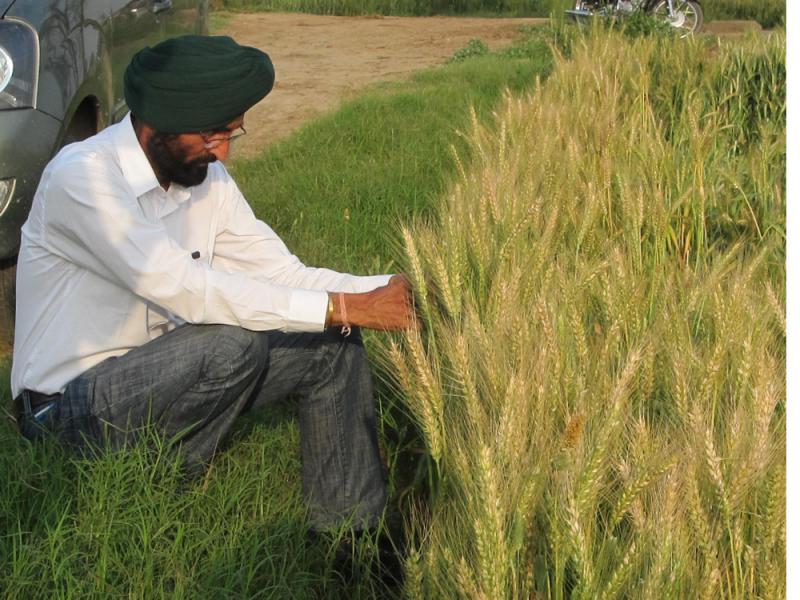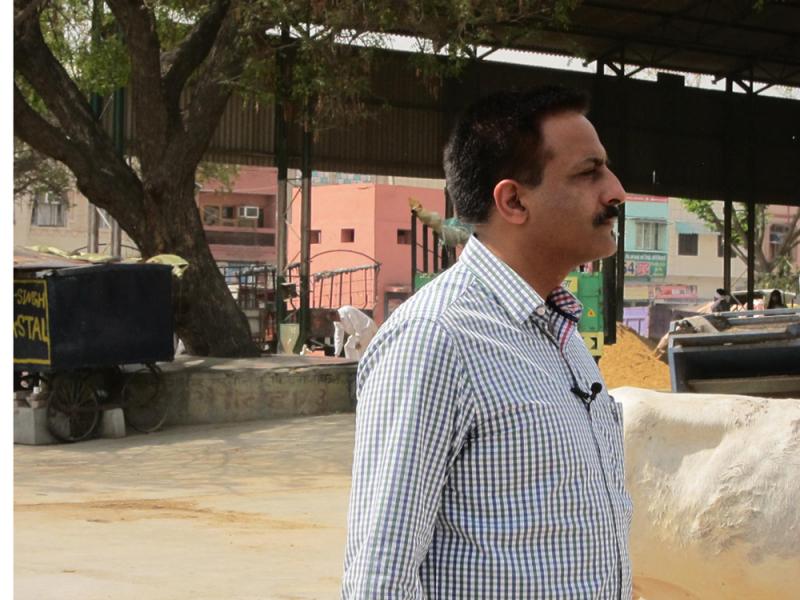Though many farmers in India are enjoying better crop yields and higher incomes due to technological advances, they still see a looming gap between the tools available to them and farmers in developed nations.

Gurjeet Singh Mann and Gurdarshan Sidhu successfully grow rice, potatoes, wheat, Bt cotton and other crops on their farms near Sirsa, a city in the heavily agricultural state of Haryana, in North India.
The two men, who are agricultural leaders in their community, have watched farmers make significant progress in recent decades, a trend they directly attribute to improved technology.
As our incomes have increased, our standard of living has also, Mann says, noting that many farmers in his community have built nice houses, sent their children to good schools and purchased cars and farm equipment. Now, with the use of technology and machinery, farmers also find some time to go for a vacation. When we did not have that machinery, they were always busy at their crops. So the tractors have made the job easy nowadays. These small machines can be bought by everyone because they’re not so costly.
Earlier, they used to be in great debt, Sidhu adds. Now they are enjoying the life. Yeah, they are having every electronic appliance at their home. And they have the latest gadgets the best phones and whatever their liking is.
It was not like that 20 to 30 years ago, Mann says. But to maintain that standard, you have to get more income.
And that s where technology comes in.
They point to the widespread adoption of irrigation as one example of how technology has benefitted Indian farmers, who previously relied solely on rainfall to water their crops. Farmers also can inject fertilizers and pesticides through the system, which makes the delivery more efficient while reducing expenditures on inputs.
We have seen, when our fathers and grandfathers [were farming], yield was very, very low, Mann says.
Ten times lower than now it is, Sidhu adds.
Yes, yes, Mann agrees. So things have changed.
But now, at this stage, the production has become standstill, Sidhu notes.
Despite the current plateau, this is not the peak performance of our crops, Mann says. I think we can even more increase our yields with better technology, better machinery, better management of agronomy.
They see promise in a new variety of rice that doesn t require the labor-intensive practice of transplanting, and can instead be seeded directly in the ground. Such advances are critical, they say, because even India, with its large population, has a shortage of farm labor.
Labor used to be migratory labor, Sidhu explains.
Now they get some employment in their native states, and they’re hesitant to come over here and stay for two months, Mann adds. They would prefer to stay back at their home and with their families, even if their earnings are low. So you have to be very persuasive to bring them to do your farms. It is a big headache that’s increasing every year. Everybody is switching to some other jobs. It’s hard to work in farms, but they feel good and easy to work in the cities — some other jobs.
While mechanization reduces the need for manual labor, it presents its own challenges, including navigating equipment around a tangle of overhead electrical wires and irrigation channels that cross the fields every two acres.
I have been very conservative with buying big machinery, modern machinery, Mann says. I do like to have that machinery. The problem is that it’s very expensive. And then again, if you buy a very small machinery, then it is very time-consuming.
I love mechanized farming, Sidhu says. I love to buy big tractors. I love to drive big tractors. But you cannot possess them individually. They are too much costly. I have a combined harvester now. But you need too much big area to bring back the returns of your investments.
India has relatively small-sized farms, ranging from five to 20 acres. Community ownership of equipment is difficult, Mann says, leaving farmers with just two options: You can either hire it or you can buy it. Hire you can only do if it is available; otherwise, the only option is to buy it.
India s government could help by reducing the heavy import taxes on farm machinery and granting farmers subsidies to purchase it, they say.
Mann says productivity also has been improved through land reclamation swapping soil between fields so that both are equally good and equally fertile, well drained.
All this has happened with this technology because it was very difficult to do all these things with a spade and bullocks.
I have seen bullocks plowing the fields 20 years earlier, but now you cannot notice even one single bullock, Sidhu says.
Yeah, they only look good in fairy tales, Mann says. Practically, you have to have machinery and technology if you want to sustain yourself.
Indian farmers, many of whom regularly consult their smart phones, are using information technology to join agricultural chat rooms, obtain weather forecasts, research plant diseases and even consult leaf color charts that help them determine whether the plant needs fertilizer.
Earlier, we used to throw two bags, three bags [of fertilizer] per acre without watching the health of the plants, Mann says. Now people are becoming more aware about the usage of these fertilizers and pesticides.
Still, heavy pesticide use remains a problem, with national economic ramifications.
Whenever we say we want to export our produce, the importer says, You have high toxic level of pesticide residues in your grains, Mann says. Yes, because we use too much of pesticides. Which you know we cannot get rid of; otherwise, we will get half the yield that we are getting now. So we have to use that irrespective of it can be exported or not.
Mann and Sidhu would like to see more seeds genetically engineered to resist pests, so that pesticide applications could be reduced. That need has become more urgent due to recent climate changes that have brought rain, humidity and more insect pests to their region, which was previously hot and very dry.
We cannot do much for the climate, but we have to know how to manage things in the new climate that we have now, Mann says. And even the technology behind pesticides has also improved drastically. The new-age pesticides are very specific. They do not kill everything. They safeguard the friendly insects, such as ladybug and such things and only kill the harmful insects. That is good for environment, also. We need our farm-friend insects and birds.
Farmers are also facing obstacles in choosing crops that not just thrive, but can be successfully marketed, processed, stored and distributed.

Sidhu says he previously cultivated sugarcane, which grows well in the region. But I left because in those days, there was not a good price of sugarcane. Now the prices are gone up, but we don’t have sugar mills over here. So again, transportation [to mills] is a big problem for sugarcane.
Some farmers in the area have attempted to diversify by moving into orchard crops, Sidhu says. While the prices are good, it s hard to find laborers to pick the fruit and India lacks the cold storage and refrigerated transport needed to preserve highly perishable produce.
Which again are very expensive now because of imported technology, Mann adds.
The scarcity of farm labor has also created an impediment to controlling weeds that hamper productivity by stealing water and fertilizer intended for crops. But herbicides can t be used when cotton plants are very small, Sidhu says. He and Mann hope Indian farmers will be able to access a new variety of cotton genetically engineered to withstand applications of Gramoxone and glyphosate.
But still, it is not available on the market, Sidhu says.
Mann also has high hopes for improved seeds because that is what is affordable by us. I am basically wholeheartedly for the technology in the form of seed rather than the form of machines because if it doesn’t work for you, you can go for another seed technology the next year.
Genetically engineered mustard holds promise for Indian farmers, they say, though it is not yet available to them. We used to grow mustard along with wheat, and it used to give us 18 [pounds] of yield, Mann says. But now that has also declined. But [GE] mustard gives double that yield. If we have that, we can partly replace our wheat.
Adds Sidhu: It will also save on irrigation water because mustard requires very less water.
Indian farmers are prohibited from growing genetically engineered canola seeds, which cannot legally be imported, Mann says. We can consume [GE] canola oil freely in our kitchens, but [Indian] farmers cannot grow canola. Is it fair to us? And if there’s nothing wrong with those things, if Americans can have those things, why not we can have?
Click here to see a video of Gurjeet Singh Mann and Gurdarshan Sidhu.
